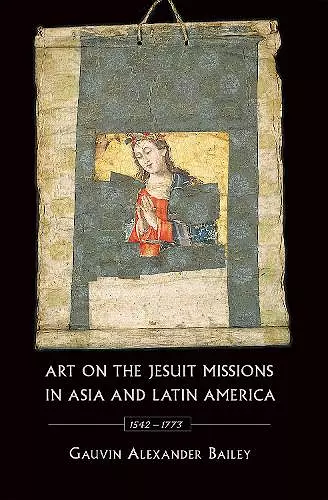Art on the Jesuit Missions in Asia and Latin America, 1542-1773
Gauvin Alexander Bailey author
Format:Paperback
Publisher:University of Toronto Press
Published:15th Nov '01
Currently unavailable, and unfortunately no date known when it will be back

'Dr. Bailey argues persuasively that European art was not simply imposed upon non-European cultures, but rather, recognizing the tremendous diversity of the contact cultures; the author adroitly considers this contact as a two-way dialogue. Dr. Bailey emphasizes correctly the fascinating assimilations and subsequent mutations of the European models. This is not a book about Jesuit art in Paraguay or Japan even though it actually functions as a guide to some of these lands better than any existing literature. Rather it assesses broader trends ... it should become an excellent methodological and intellectual model for all scholars working on this material.' -- Professor Jeffrey Chipps Smith, Department of Art and Art History, University of Texas
Through a sweeping look at Jesuit activities in Japan, China, Mughul India, and Paraguay, Bailey finds evidence of artistic hybridization as a means of communication and argues in favour of a paradigm of artistic exchange.
When the Jesuit missionaries ventured from Europe to newly discovered territories in Asia and Latin America, they brought with them the rich traditions of Renaissance and Baroque art and architecture. What happened to the artistic and social practices already thriving in the communities that the missionaries encountered is the story told by art historian and Jesuit specialist Gauvin Alexander Bailey.
The Jesuits, determined to convert both spiritually and culturally, put great effort into imparting their own artistic techniques and knowledge. At the same time they were unusually tolerant of the non-European cultures, making artistic accommodations in order to communicate with each particular society. The resulting hybridization was complex: German, Italian, and Flemish as well as the dominant Spanish and Portuguese idioms mingled with multiple Asian and Amerindian traditions.
Bailey argues that this cross-pollination of early modern art became the first truly global visual currency for cultural exchange. Through a sweeping look at Japan, China, Mughul India, and Paraguay, the author focuses on four of the most flourishing artistic encounters and discovers much unrecognized or misunderstood art. He overturns the simple thesis that art was imposed on subject cultures in favour of the more difficult paradigm of exchange. This meticulously researched book has over 100 beautiful illustrations and a thorough index.
Winner of the 2000 Roland H. Bainton Prize Winner for Art and Music History - Sixteenth Century Studies Conference
'This extremely impressive book immediately becomes the standard work on the "diverse blend of traditions" in the art produced around the world under the sponsorship and through the influence of the Jesuit missions.'
-- Jonathan Chaves * George Washington University *'Gauvin Bailey, assistant professor of art history at Clark University accomplishes something quite radical in Art on the Jesuit Missions in Asia and Latin America. By resisting the centuries-old impulse either to canonize or to demonize the Jesuits, he manages to make a powerful and convincing assessment of their cultural impact.'
-- Paul Mitchinson * The National Post *'This lively, well-researched book makes important contributions to the emergence of a post-colonial understanding of an important set of early modern cultural encounters. Every scholar of international history will find in it new knowledge, surprising and beautiful illustrations, fresh insights, and a great deal of stimulation and even inspiration.'
-- John E. Willis Jr. * The International History ReviISBN: 9780802085078
Dimensions: 248mm x 171mm x 23mm
Weight: 740g
408 pages